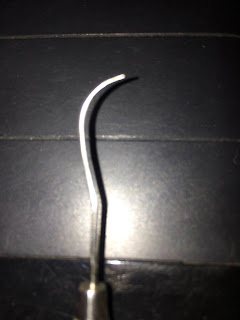“Does it hurt?” or How do dentists tell if a tooth has a cavity?
Telltale signs
what if you as a person could look at your own teeth. Can you see any of these features?
chipping (little cracks running on the tooth)
mamelons (the little knobs that most people have at the edges of their front teeth)
white lines or dark lines on the back teeth
broken front tooth
yellow white spots under the surface
yellow brown pits on the surface (like freckles)
dark tops on the back teeth
hollow teeth
What about feel?
what if you could feel any of these, along with the signs
bad breath
pain on chewing, or hot drinks, or cold drinks, or just by closing on teeth
tongue touching a jagged or a pointy edge
food getting stuck between teeth unlike before
looseness of teeth
bleeding from the gum especially when brushing
pain in the top teeth with bowing down
pain on a flight from teeth
tooth chipping away with food
If any of these signs and symptoms are experienced, we can safely assume to know that you have at least one tooth that requires care.
What is that poker thing you used?
Your tooth is normally protected by the outer shell layer - Enamel. The hook we use (pictured below) is one of the means of telling if indeed that shell has been compromised. Because the enamel layer is very strong, that hook (we call it the dental probe) is what we often use to move across the surface of the tooth and check in between the teeth, since we cant look in between two teeth, in a closed mouth, to probe for cavities, and if the cavities do exist (and often times, we are equally surprised they do, along with our patients), we have what we call a catch. This means the tooth is compromised and the enamel layer is breached where the catch is, and that means we need to also take an x-ray.
Must you always use the probe?
No. There are other advanced means to tell. We have cavity detector dyes, x-rays, and your signs and symptoms from earlier. We sometimes resort to these, only in cases where the tooth is visibly destroyed, and we need to make sure we are not going to walk in to the root canal, or if indeed, there is one to begin with.
How can I make sure my teeth do not get painful during Covid-19?
The whole world got shook up by the outbreak of Covid-19, especially countries like the UK, USA, and India. Lots of loved ones and friends, as well as professionals were lost due to the pandemic. With the third wave about, you can schedule an appointment at your nearest dentist.
If you enjoy reading our work, be sure to subscribe to receive it as it becomes available.






Comments
Post a Comment